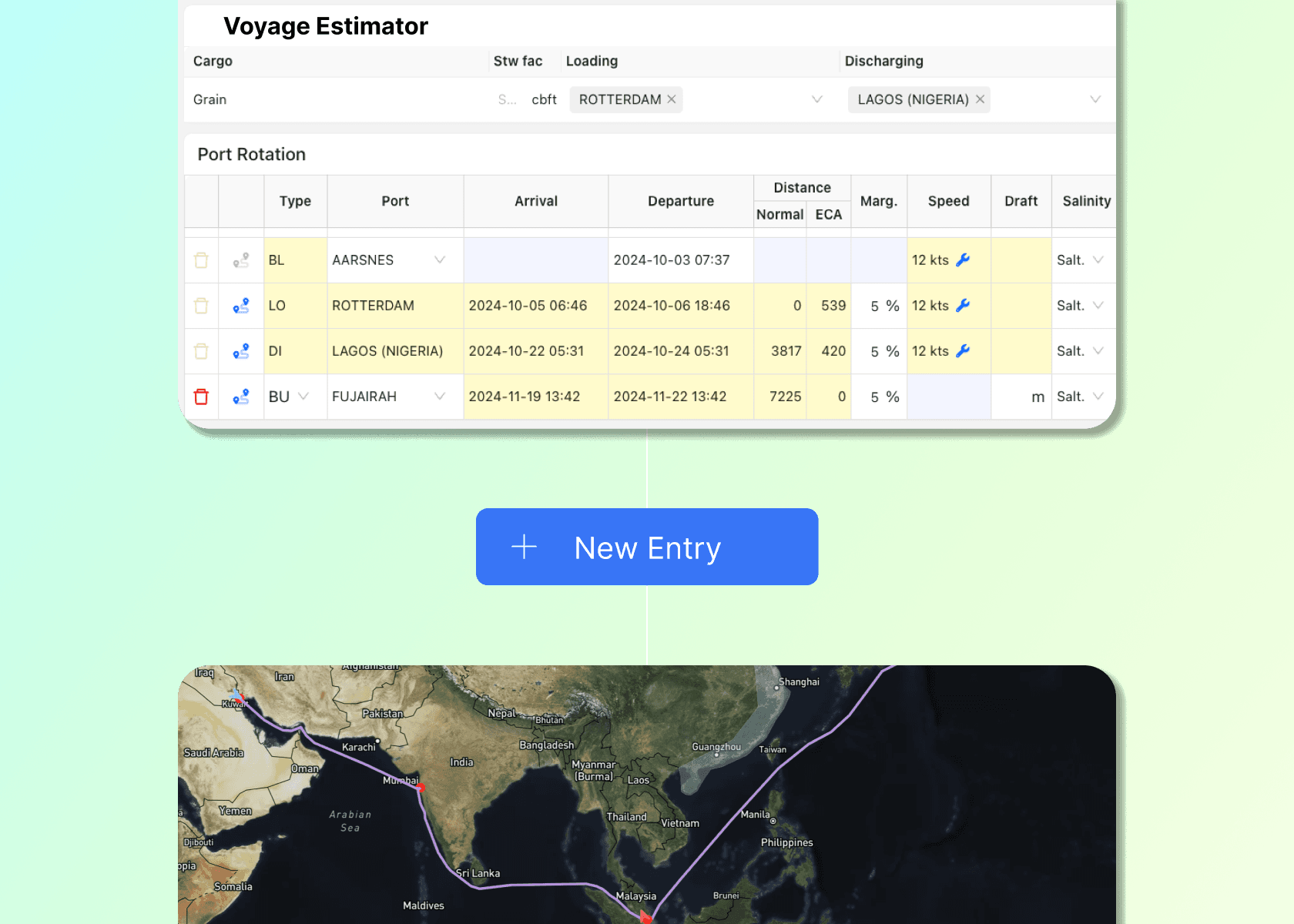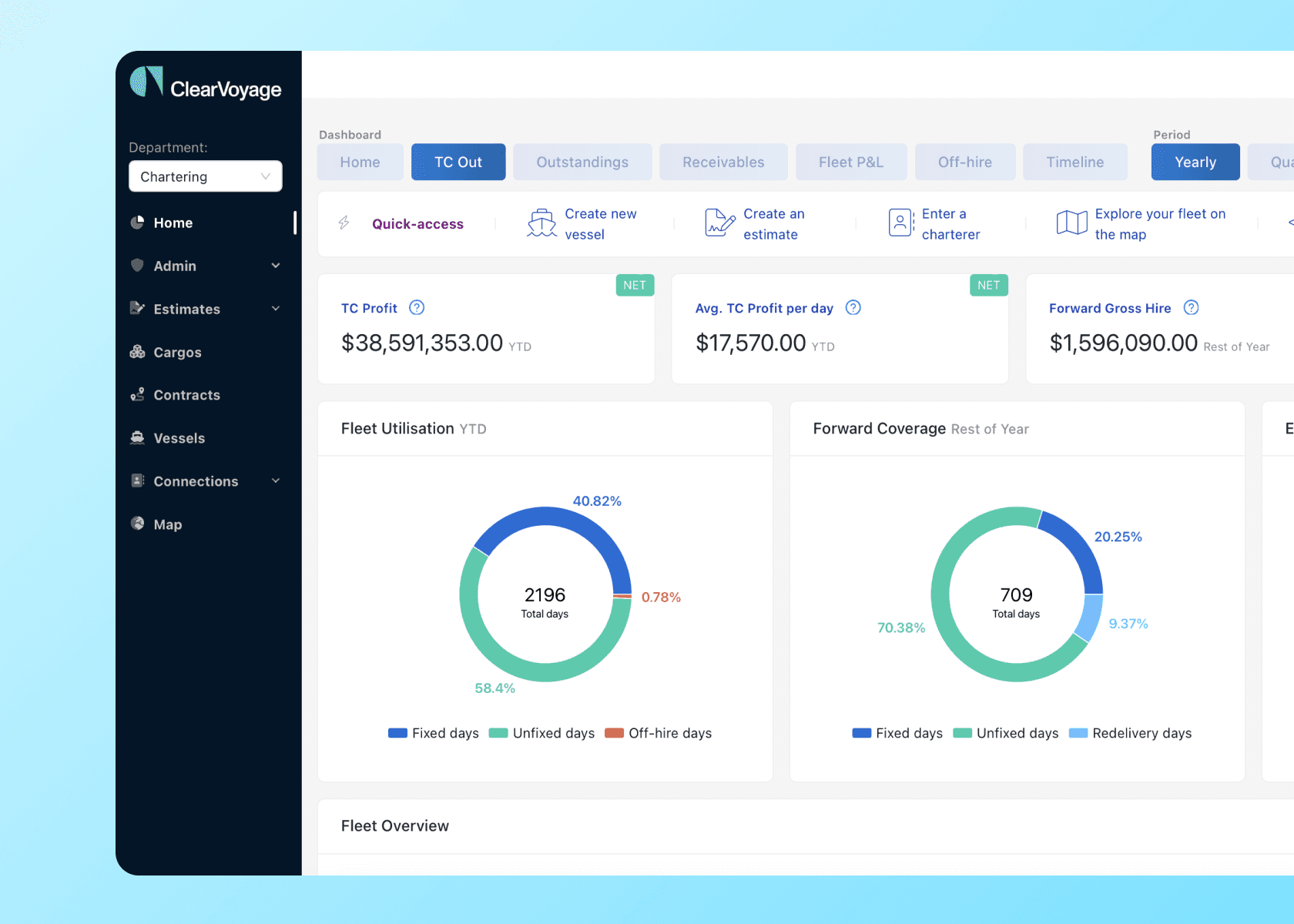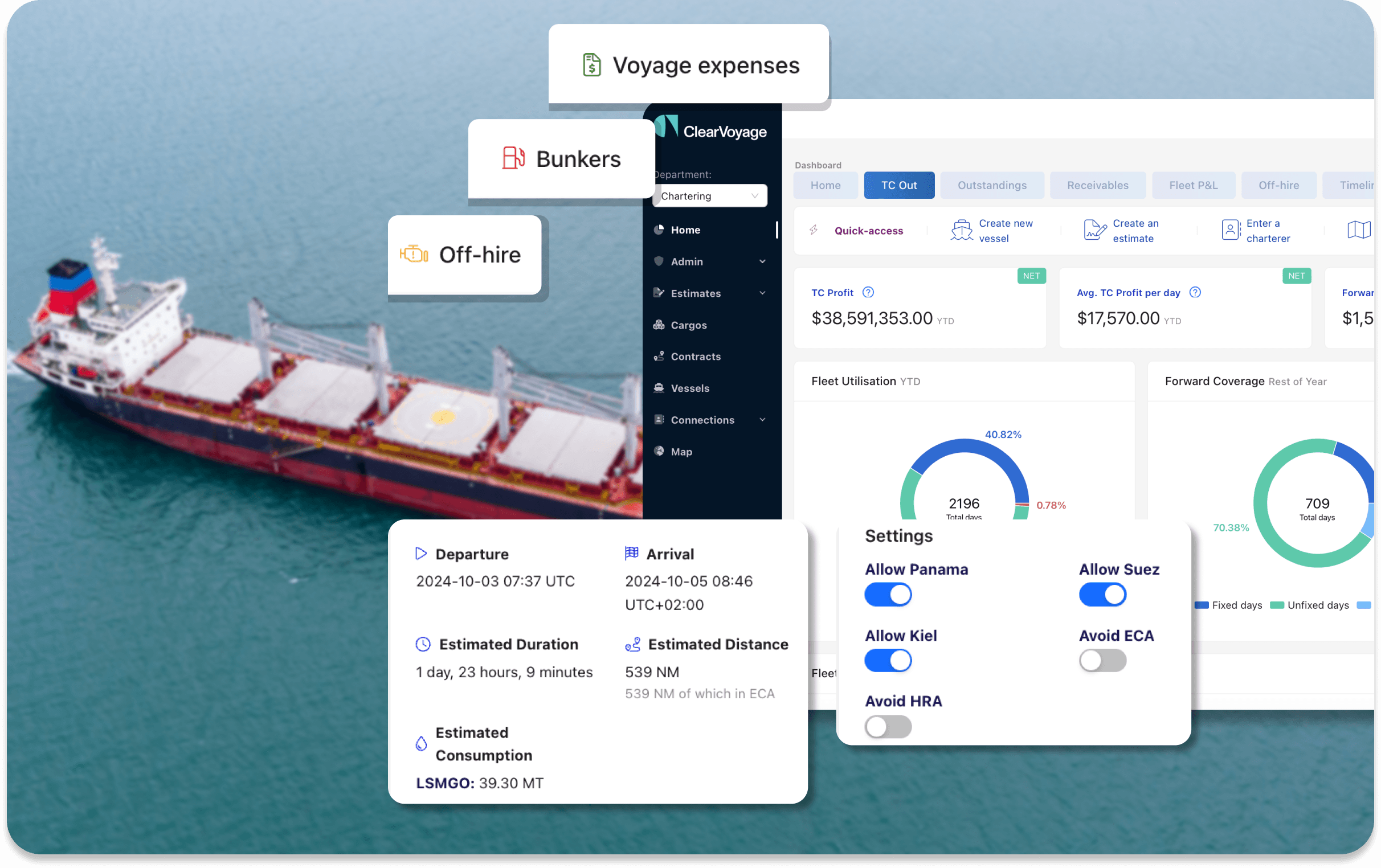Oct 10, 2024
In the highly competitive and complex maritime industry, efficiency is paramount. Ship operators and owners face numerous challenges, including rising operational costs, strict environmental regulations, and the need for precise reporting. This is where an optimized voyage management workflow plays a critical role. By ensuring that every step of a voyage — from planning to execution and post-voyage analysis — is seamlessly managed, shipping companies can enhance operational efficiency, cut costs, and remain compliant with regulatory requirements.
In this comprehensive guide, we will explore the entire voyage management workflow, step by step, and discuss how it can be enhanced using modern technologies like Voyage Management Systems (VMS) to achieve operational success.
What is a Voyage Management Workflow?
A voyage management workflow refers to the end-to-end process that shipping operators and charterers use to plan, monitor, execute, and evaluate voyages. It involves multiple steps, from voyage estimation and planning to real-time voyage monitoring, reporting, and post-voyage analysis.
Optimizing the workflow helps improve operational efficiency, reduce costs, and ensure compliance with industry regulations. With the use of voyage management systems, ship operators can centralize data, gain real-time insights, and manage every aspect of a voyage more effectively.

Why is an Efficient Voyage Management Workflow Important?
An efficient voyage management workflow is critical for shipping companies to:
Minimize costs: By optimizing routes, fuel consumption, and operational decisions, ship operators can lower expenses.
Enhance voyage profitability: Precise voyage estimation and ongoing performance monitoring help identify opportunities to boost profitability.
Ensure compliance: A streamlined workflow allows for accurate reporting on emissions, laytime, and other regulatory requirements.
Improve decision-making: Real-time data insights empower operators to make informed decisions during the voyage, preventing delays and inefficiencies.
Now, let's break down each stage of the voyage management workflow and explore its importance.
1. Voyage Estimation and Planning
The voyage management workflow begins with voyage estimation. This is a crucial step in determining whether a voyage will be profitable and assessing the costs involved in executing it. The estimation phase includes analyzing the following key factors:
Route optimization: Determining the best possible route for the vessel based on distance, weather conditions, and fuel efficiency.
Fuel consumption tracking: Estimating fuel consumption based on the vessel’s specifications, route, and cargo weight.
Port costs and fees: Assessing potential port fees, harbor dues, and any other charges associated with docking.
Voyage duration: Estimating the total time required for the journey, including port laytimes for loading and unloading.
With accurate data in hand, a voyage estimator can predict the costs associated with fuel, port fees, and vessel wear and tear, helping operators decide whether the voyage is economically viable. By using voyage estimation software, this process becomes faster and more reliable, allowing operators to make more informed business decisions.
Best Practices for Voyage Estimation and Planning:
Use historical data to fine-tune estimates based on past voyages.
Implement voyage estimation software to automate calculations and minimize errors.
Factor in weather patterns and alternative routes to avoid delays and fuel overconsumption.
2. Chartering and Contract Management
Once the voyage estimation is complete and the voyage is deemed profitable, the next step is securing contracts and managing the chartering process. This involves selecting the type of contract that governs the voyage, such as:
Time charter: The vessel is hired for a specific period, and the charterer pays for all operating expenses, except for the crew and vessel maintenance.
Voyage charter: The vessel is hired for a single voyage, and the charterer pays a lump sum for the transportation of cargo.
The terms of the contract, including laytime calculations, demurrage, and other penalties, must be carefully managed to avoid disputes and unforeseen costs. A well-designed voyage management system (VMS) can help streamline the contract management process, ensuring transparency and compliance with the terms.
Best Practices for Chartering and Contract Management:
Use contract management tools to automate and track key contract milestones.
Ensure that all laytime and demurrage terms are clearly outlined in the charter party.
Regularly update the contract management system with real-time voyage data to avoid discrepancies.
3. Voyage Execution and Real-Time Monitoring
Once the contracts are in place and the voyage is underway, voyage execution begins. During this phase, real-time monitoring becomes essential to ensure that the voyage proceeds as planned and adjustments are made when necessary. This phase involves:
Fuel consumption tracking: Monitoring fuel consumption in real-time to ensure optimal usage and avoid unnecessary expenses.
Route monitoring: Adjusting the vessel’s course based on weather conditions, sea traffic, and fuel efficiency.
Cargo management: Ensuring the safe and efficient handling of cargo during the voyage to prevent delays or damages.
With the help of modern voyage management system software, operators can track all these factors in real-time, allowing them to make informed decisions that minimize risks and maximize efficiency.

Best Practices for Voyage Execution and Monitoring:
Use a voyage management tool to gather and analyze real-time data on the vessel’s performance.
Regularly check fuel consumption and emissions levels to remain within budget and regulatory limits.
Adjust routes based on dynamic weather conditions and port congestion reports.
4. Post-Voyage Analysis and Reporting
Once the voyage is complete, it’s time to analyze its performance and generate reports. This step is critical for identifying any inefficiencies that occurred during the voyage and ensuring that all regulatory reporting requirements are met. Post-voyage analysis involves:
Operational performance review: Analyzing the vessel’s performance throughout the voyage, including fuel efficiency, laytime, and delays.
Compliance reporting: Submitting reports to regulatory bodies, such as emissions data for the EU ETS or other environmental regulations.
Customer reporting: Providing clients with detailed reports on the voyage’s progress, delays, and cargo handling to maintain transparency and customer satisfaction.
By using integrated voyage management system software, operators can automate reporting processes, ensuring that all data is accurately captured and submitted in a timely manner.
Best Practices for Post-Voyage Analysis:
Implement a P&L analysis tool to compare estimated and actual costs.
Automate compliance reporting with a VMS to ensure timely submissions.
Conduct a debriefing session with crew and stakeholders to gather insights for future voyage optimization.
5. Continuous Improvement and Feedback Loop
One of the most important aspects of the voyage management workflow is the creation of a feedback loop. After each voyage, insights and lessons learned should be incorporated into future operations. This process of continuous improvement can significantly enhance operational efficiency and reduce costs over time.
Performance benchmarking: Comparing the vessel’s performance against historical voyages and industry standards to identify areas for improvement.
Implementing changes: Adjusting operational procedures, route planning, or chartering practices based on post-voyage analysis to improve future voyages.
Training and development: Providing ongoing training to crew and operators to ensure they are up to date on best practices, new technologies, and regulatory requirements.
By fostering a culture of continuous improvement, shipping companies can ensure long-term success and sustainability.
Best Practices for Continuous Improvement:
Regularly update best practices based on data-driven insights from previous voyages.
Conduct crew training sessions to improve performance and compliance.
Use historical data to develop more accurate voyage estimates for future operations.

Role of Voyage Management Systems in Streamlining Workflow
The entire voyage management workflow can be optimized through the use of Voyage Management Systems (VMS). These systems provide a unified platform for managing every phase of a voyage, from estimation and planning to execution and post-voyage analysis. The benefits of using a voyage management system software include:
Centralized data management: All voyage-related data, including fuel consumption, route planning, and emissions tracking, is stored in one system.
Real-time updates: Operators can monitor the voyage’s progress in real-time, making data-driven decisions to optimize performance.
Compliance assistance: VMS systems can automatically generate compliance reports, including emissions data required for EU ETS and other regulations.
Increased profitability: By optimizing routes, fuel consumption, and operational efficiency, a VMS helps reduce costs and increase voyage profitability.
Conclusion: Optimizing the Voyage Management Workflow
An optimized voyage management workflow is essential for shipping companies to remain competitive in today’s challenging maritime environment. By following best practices in each stage of the workflow — from voyage estimation and chartering to execution, reporting, and continuous improvement — operators can maximize profitability, ensure regulatory compliance, and improve overall efficiency.
With the help of modern voyage management system software, shipping operators can automate many aspects of the workflow, providing real-time insights that lead to better decision-making and improved outcomes. By continuously refining the workflow and integrating feedback, companies can ensure long-term success in an increasingly complex and regulated industry.
